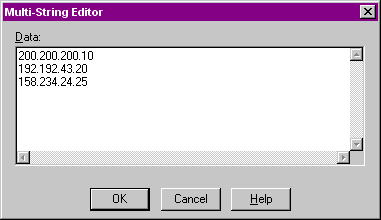
- FIX ME STICK FOR 4 COMPUTERS AND SOS ONLINE BACKUP HOW TO
- FIX ME STICK FOR 4 COMPUTERS AND SOS ONLINE BACKUP INSTALL
- FIX ME STICK FOR 4 COMPUTERS AND SOS ONLINE BACKUP PC
- FIX ME STICK FOR 4 COMPUTERS AND SOS ONLINE BACKUP DOWNLOAD
While boot loader errors can be a bit intimidating when they pop up-mostly because of how little information you’re given when they happen-they are reasonably easy to repair.
FIX ME STICK FOR 4 COMPUTERS AND SOS ONLINE BACKUP HOW TO
RELATED: How to Fix Hard Drive Problems with Chkdsk in Windows 7, 8, and 10 And it’s a very easy thing to check on and fix. It’s unlikely that using the steps we’ve talked about will cause problems with system files, but it is possible. Second, use the System File Checker utility to scan for and fix any corrupted system files. It’s always possible that your bootloader error stemmed from physical problems with your hard disk. First, run the Check Disk utility to scan the integrity of your file system and hard disk.
FIX ME STICK FOR 4 COMPUTERS AND SOS ONLINE BACKUP PC
Steps to Take After RecoveryĪfter you’ve successfully repaired your PC and are able to start Windows, we highly recommend going ahead and performing a couple of other steps. You can always type bootrec /? to see more options for and get help with the command. bootrec /fixbootĪnd of course, the bootrec tool also offers other more advanced options. This command is useful when you suspect your boot sector may have been overwritten by another operating system installation or malware, or if you suspect the boot sector itself is damaged. It won’t overwrite any data on your actual partitions, but you may need to reconfigure your multi-boot options after using this command. This option does overwrite the current partition table and thus can sometimes cause issues if you’re set up to boot to multiple operating systems.

To write a whole new boot sector to the system partition instead, type the following command and hit Enter. It’s a good start for repairing boot loader errors resulting from file corruption. This command writes a new Windows-compatible Master Boot Record (based on whatever version of Windows you’re using) to the boot sector without overwriting the existing partition table. To restore the Master Boot Record, type the following command and hit Enter. The Advanced Options page will appear next and it contains the options we’ll be discussing in the next couple of sections. On the first page, click the “Troubleshoot” option. Windows will then load the recovery environment. If you’re starting from a recovery partition or repair disc, the screens might look a little different, but you’ll end up at the same options we’re going to cover here. If you start your PC using an installation disc, click through until you see the initial Windows installation screen and then click the “Repair your computer” link instead of starting an installation.
FIX ME STICK FOR 4 COMPUTERS AND SOS ONLINE BACKUP DOWNLOAD
RELATED: Where to Download Windows 10, 8.1, and 7 ISOs Legally

And by the way, if your PC is still operational you might want to take the precautionary step of creating a recovery drive or system repair disc that you can use in the future.
FIX ME STICK FOR 4 COMPUTERS AND SOS ONLINE BACKUP INSTALL
You can then create a DVD or USB install disc that you can use to boot your own PC. If you don’t have an installation disc, you’ll have to use another PC to download a copy of Windows. If your PC doesn’t have a recovery partition-or you’re just not sure how to access it-you can also start your PC using a DVD or USB with the Windows installer on it.

How you do that varies with what brand of PC you own, but you’ll often see a message during startup telling you what key to press to start recovery and repair. It’s possible that your PC has a special recovery partition that will allow you to start the Windows Recovery Environment without needing a physical disc. The first thing you’ll need to do is start your PC into the Windows Recovery Environment. RELATED: How to Use Safe Mode to Fix Your Windows PC (and When You Should) Boot From the Windows Installation Media or Recovery Partition Performing a System Restore would be a good place to start. Instead, you should try starting the PC in Safe Mode and troubleshooting from there. Note: If your PC starts to load Windows, but then fails, then the bootloader is not the problem. If you are seeing any of these messages, it means you won’t be able to start Windows and will have to use the Windows Recovery Environment to do your troubleshooting.


 0 kommentar(er)
0 kommentar(er)
